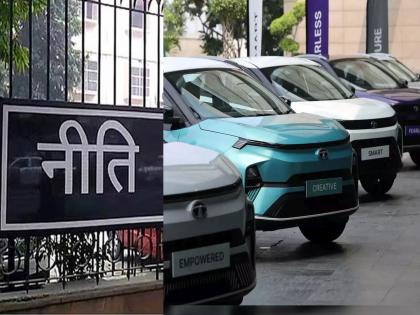Will the Government Have to Offer More Incentives on EVs? NITI Aayog Raises Concerns Over Slow Sales Growth
By Lokmat Times Desk | Updated: August 5, 2025 15:19 IST2025-08-05T15:18:17+5:302025-08-05T15:19:35+5:30
India’s electric vehicle (EV) sector, once seen as a promising alternative to fossil-fuel-driven transport, is facing serious growth challenges. ...

Will the Government Have to Offer More Incentives on EVs? NITI Aayog Raises Concerns Over Slow Sales Growth
India’s electric vehicle (EV) sector, once seen as a promising alternative to fossil-fuel-driven transport, is facing serious growth challenges. Despite various policy pushes, the momentum in EV sales has remained sluggish. A major factor has been the reduction of subsidies by both central and state governments, which has directly impacted the pricing. EVs, already expensive, have become even costlier. For instance, the Ola S1 Pro, which was available for around ₹1.08 lakh a few years ago, now sells for ₹1.80 lakh on-road. Larger EVs have also seen similar price hikes. Expectations that EV costs would drop over time have not materialized.
While EV sales in July 2025 witnessed a 90% increase compared to the same month last year, experts believe the growth is still far from satisfactory. A report by NITI Aayog notes that EV adoption in India is not keeping pace with global trends. Countries like the United States, European Union members, and China are leading in this space, while India is trailing. EVs currently make up only 7.6% of total vehicle sales in the country. With a national target to achieve 30% EV penetration by 2030, the current trajectory appears inadequate.
India has made commendable progress in terms of volume, growing from 50,000 EV units sold in 2016 to 2.8 million in 2024. However, global numbers tell a different story. In the same period, international EV sales surged from 918,000 to 18.7 million units. For India to achieve its 30% goal by 2030, it will need to increase its EV share by more than 22% in the next five years. While two-wheelers and three-wheelers are driving some growth, the adoption of electric cars, buses, and especially trucks remains sluggish.
Cost and infrastructure continue to be key roadblocks. While there are some affordable EV car options in the Indian market, their range is limited to urban commutes. Higher-range EVs are priced steeply — between ₹13–14 lakh and even up to ₹30–40 lakh. Petrol and diesel alternatives in the same category are much cheaper, drawing more buyers. Moreover, the lack of a robust charging infrastructure discourages consumers from making the switch. Most cannot afford to own two cars — one for long-distance travel and another for city use. This affordability gap and infrastructure deficit are holding back EV adoption in India.
Open in app